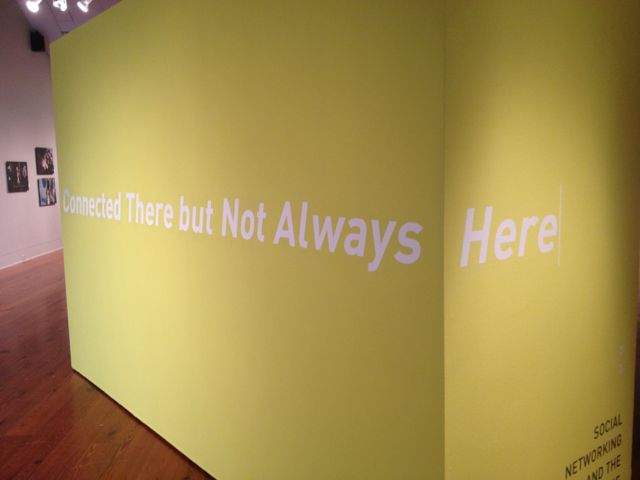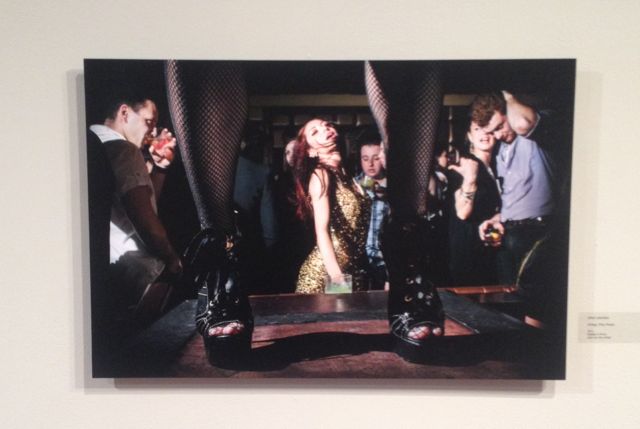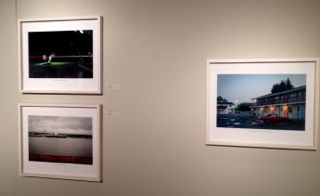
Is the Internet truly interactive?
Undeniably, the Internet has opened boundless possibilities for interaction and new avenues for communication, especially between different people from a variety of backgrounds. Undeniably this interaction is new in terms of content and format; so new, in fact, that it is hard to determine what its impact will be on society. The Light Factory’s new exhibition, “Connected There but Not Always Here,” explores the possibilities for interaction afforded by the Internet and begins to subtly suggest some of its impact.
Featuring the photographic work of Nate Larson, Marni Shindleman, Dina Litovsky, and Gabriela Herman, and the videography of Celine Latulipe, Berto Gonzalez and Annabel Manning, “Connected There but Not Always Here” will be on display until May 19th at the Light Factory (a Knight Arts grantee). It is truly a thought provoking exhibition, although the works seemed dwarfed by the large exhibition space.
Litovsky’s photographs of New York nightclubs with scantily clad women dancing, covered in paint and posing for the camera definitely grab the visitor’s attention. Her series is a fascinating exploration of women, exhibitionism and electronic media. Litovsky has hit on a widespread phenomenon of women posing in an uninhibited manner for a camera with the realization and perhaps expectation that this image will end up on Facebook, Twitter and other Internet sites.
“Untag this Photo” by Dina Litovsky, 2011.
Litovsky suggests that the women’s poses are part of an intentional exhibitionism that has become integral to their self representation, yet the title of the series “Untag This Photo,” hints that these are not acceptable images in their representation of who they are. So are these just hedonistic images of women caught up in the moment very much aware of the camera, but disregarding its consequences until the light of day returns their inhibitions? Or is this phenomenon a deeper act of self-image?
The other two series in the exhibition, “Bloggers” by Herman and “Geolocation” by Larson and Shindleman, highlight the relationship between loneliness and Internet interaction. Do people who write blogs, post on Facebook, send out tweets and chat online feel less lonely? Is interaction over the Internet just as satisfying as a conversation over coffee or even a phone conversation? The exclusion of people in the “Geolocation” series and the portrait style of “Bloggers” suggests not. In a quote on a label, Herman argues blogging is “an interactive platform, a dialogue that allows for both online and offline relationships to form,” but she has chosen to show her subjects alone with only their computers.
It is hard to really say what the impact of our internet lives will be, but “Connected There but Not Always Here” begins to explore these interactions and implications. The artworks perhaps pose more questions than they answer.
The Light Factory: 345 North College St., Charlotte; 704-333-9755; www.lightfactory.org. Gallery hours: Mon.-Sat., 9 a.m.-6 p.m.; Sun., 1-6 p.m. “Geolocation” by Larson and Shindleman.
Recent Content
-
Artsarticle ·
-
Artsarticle ·
-
Artsarticle ·


